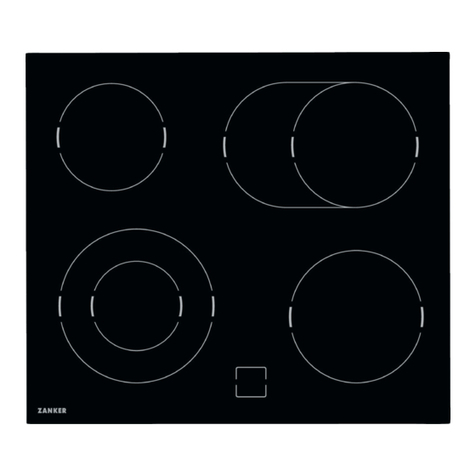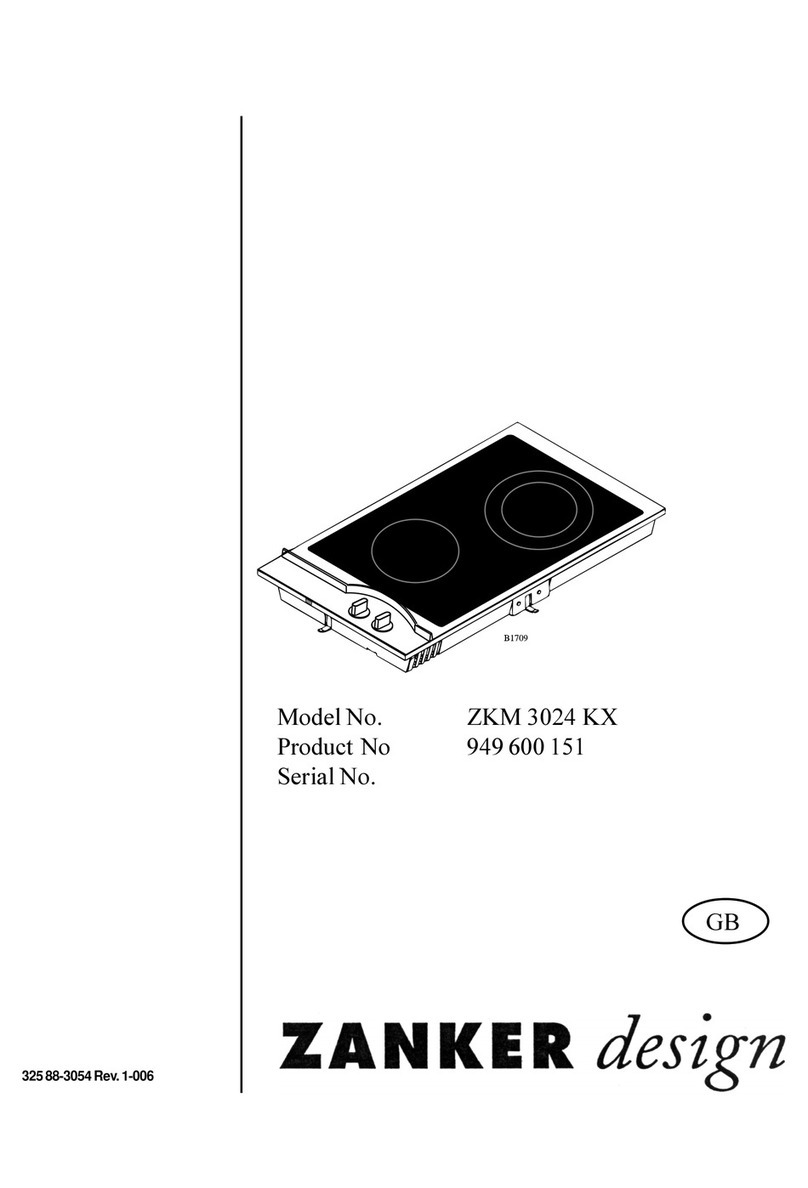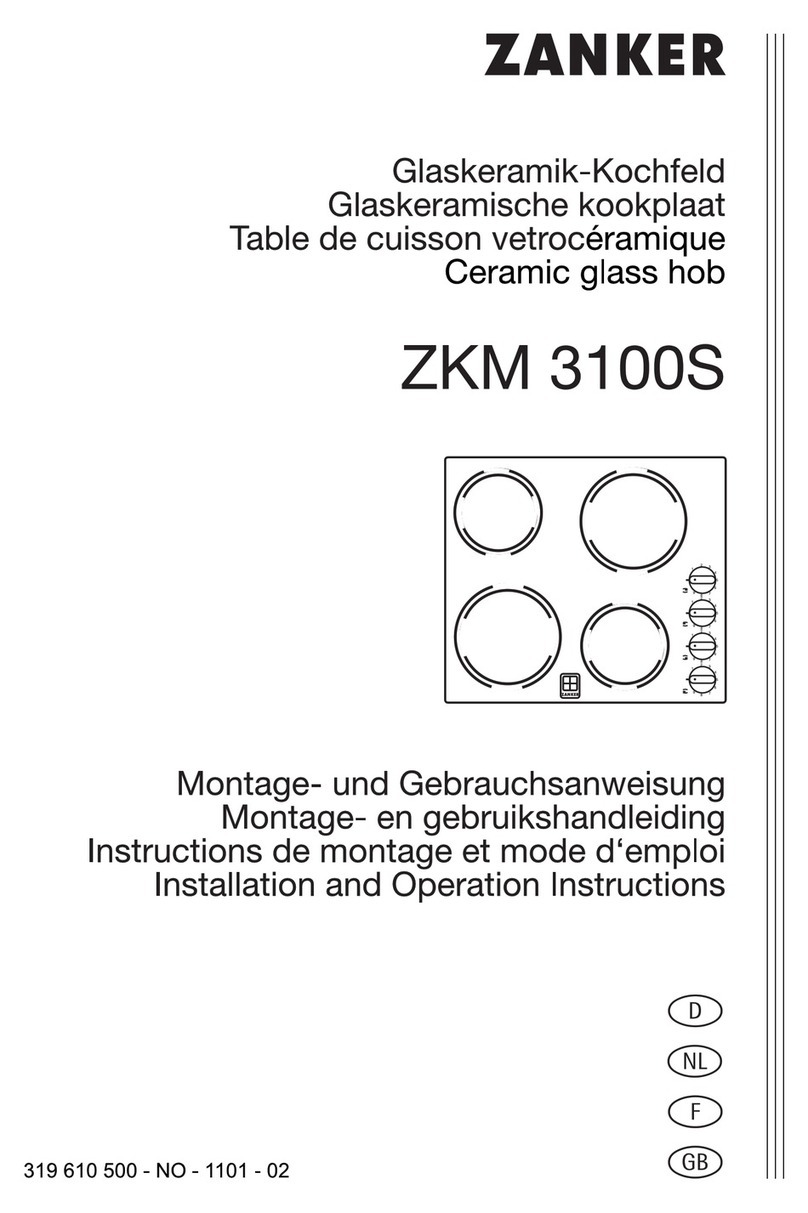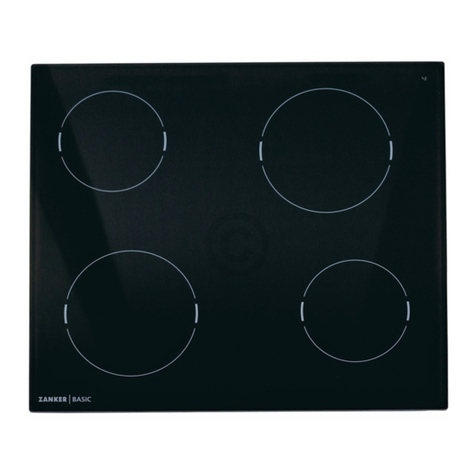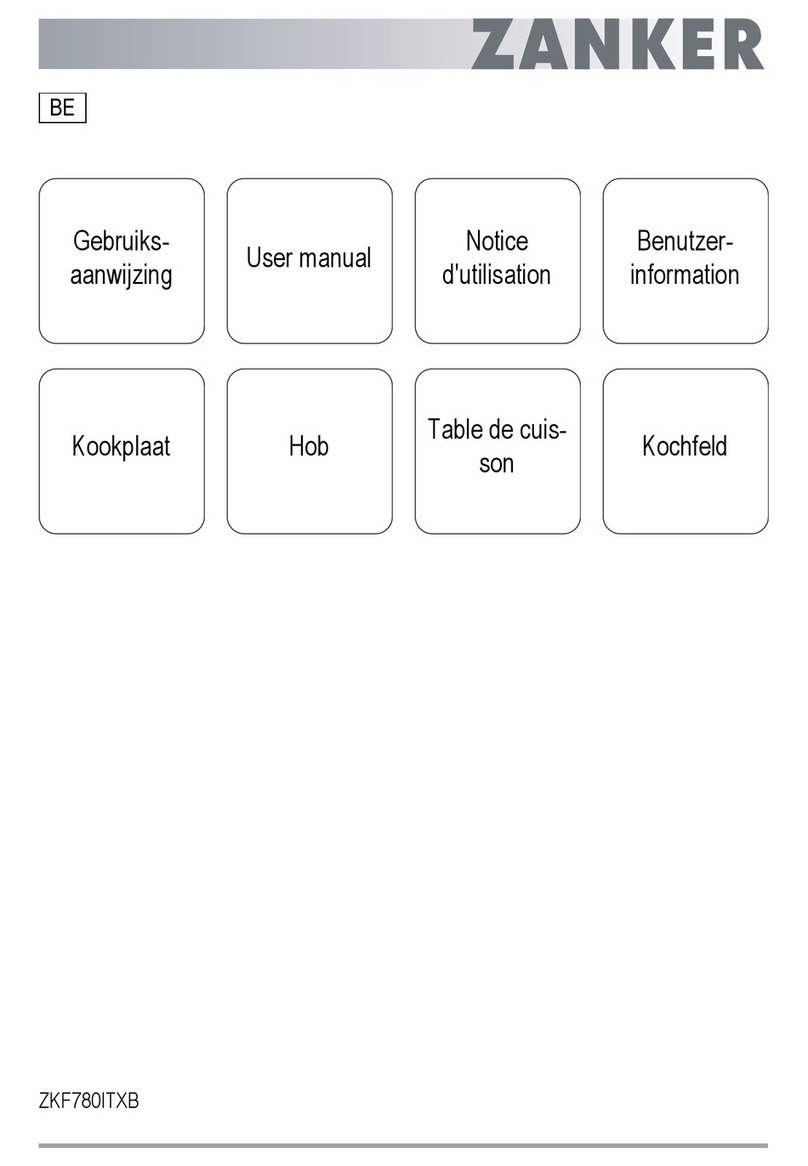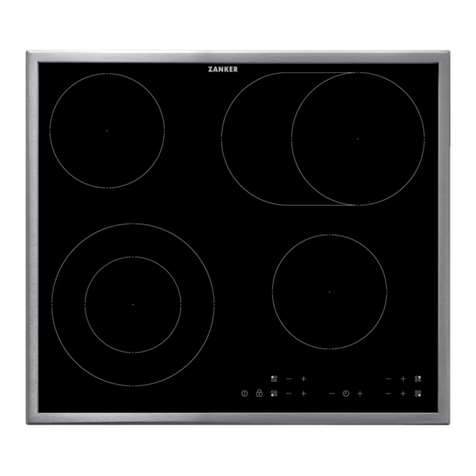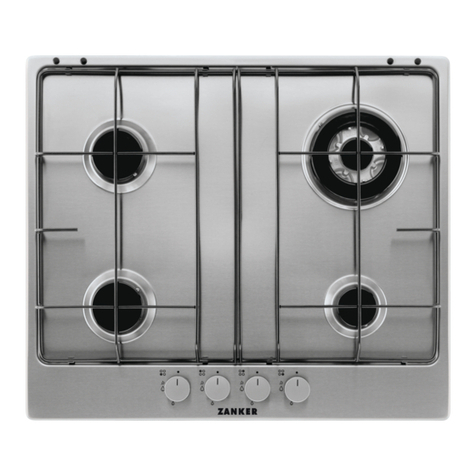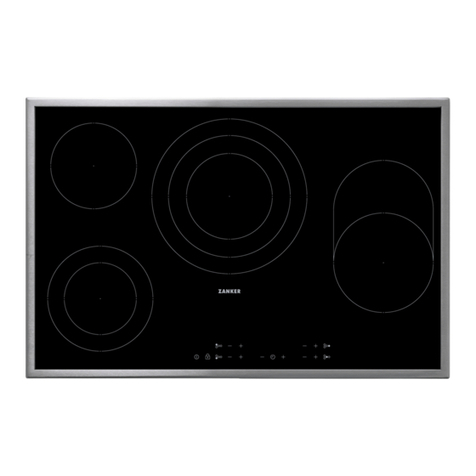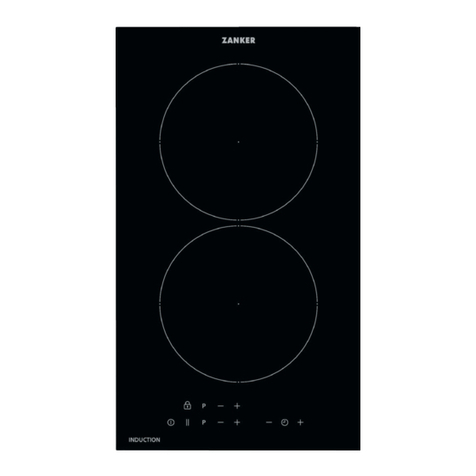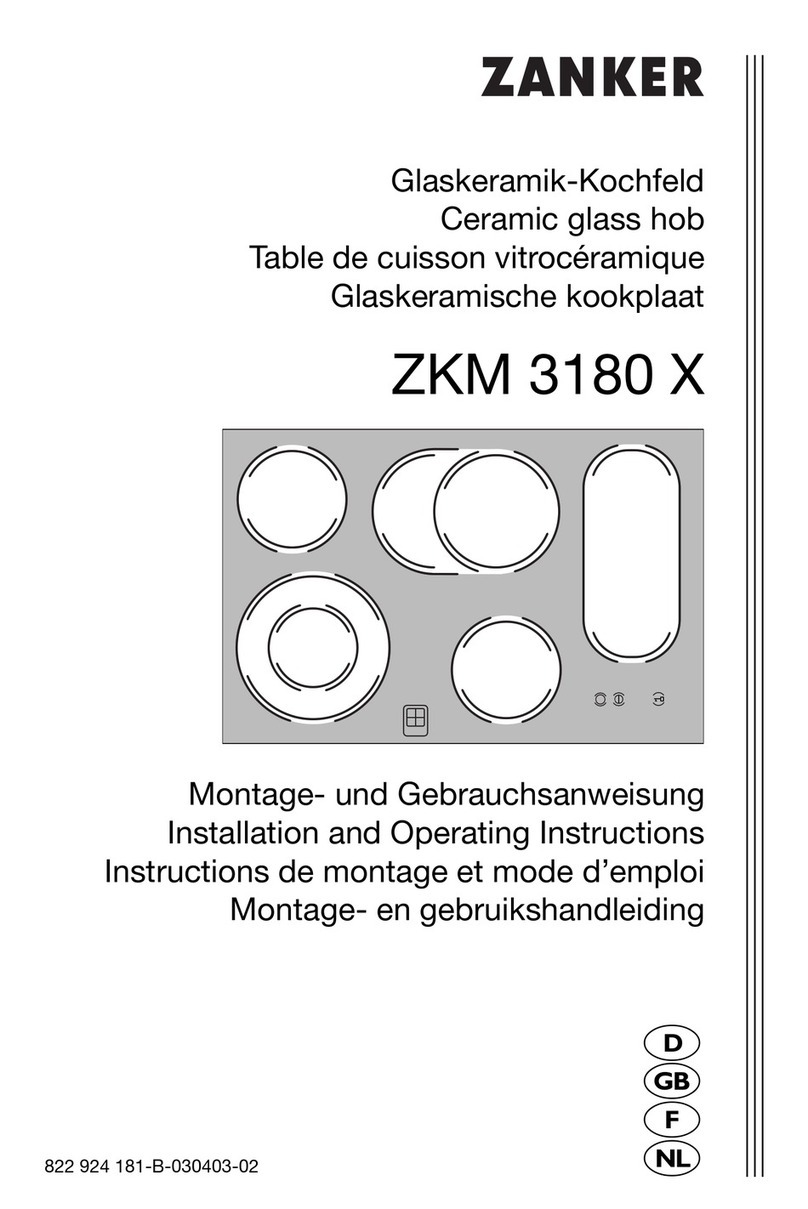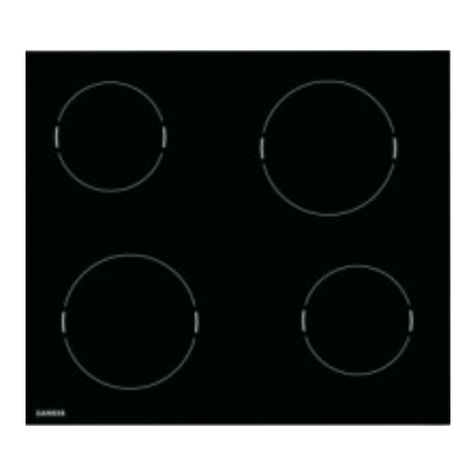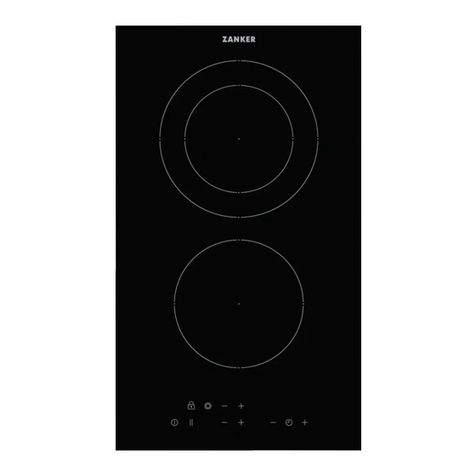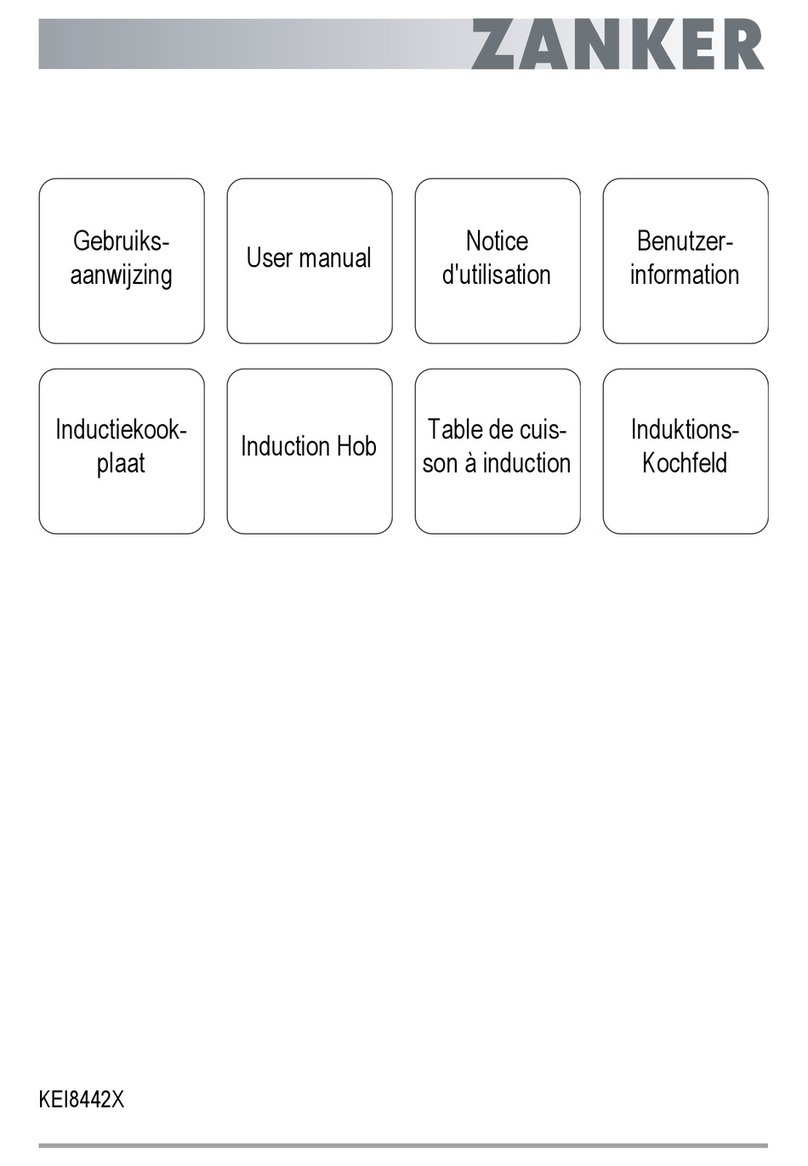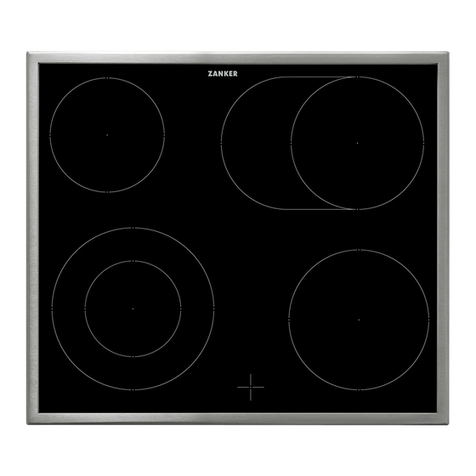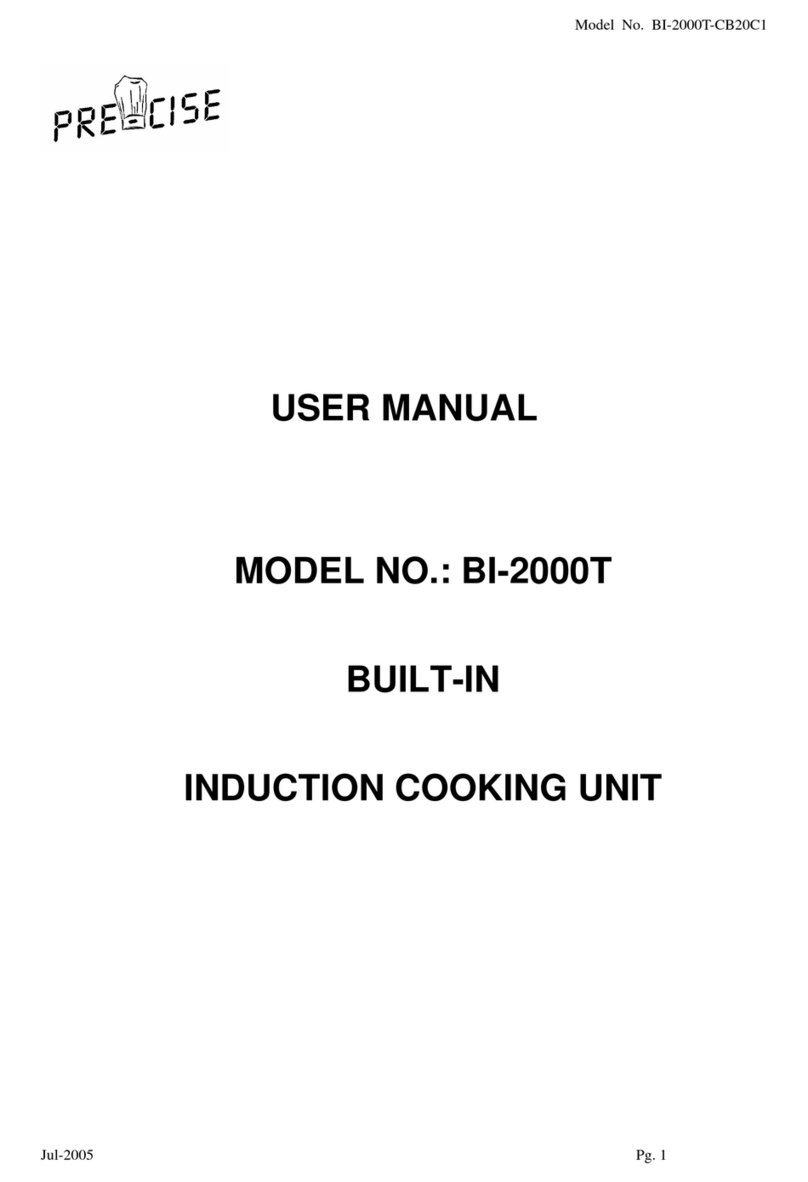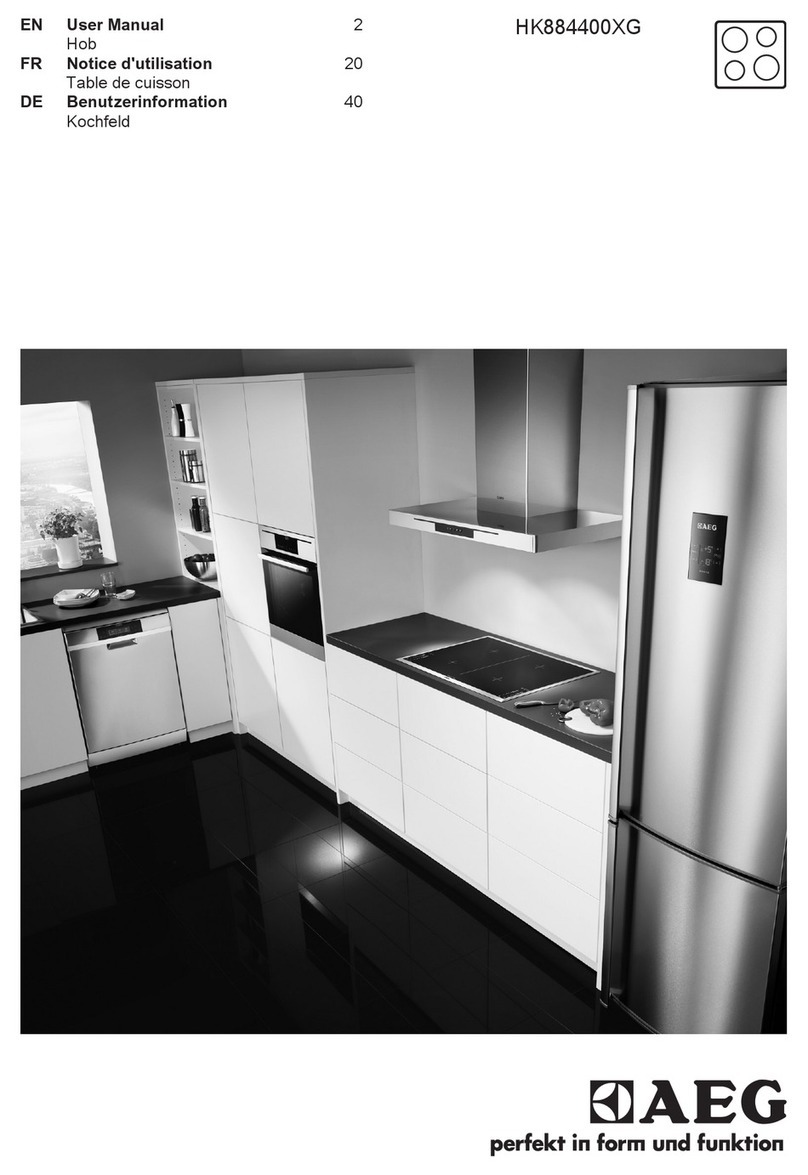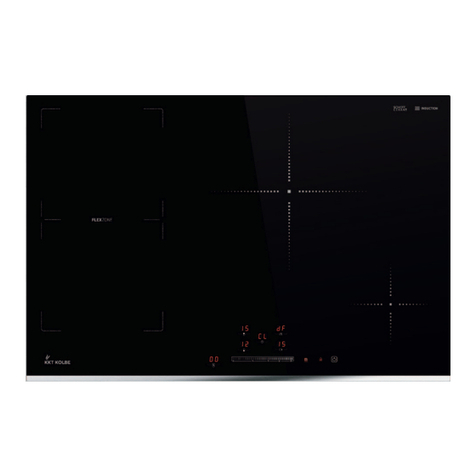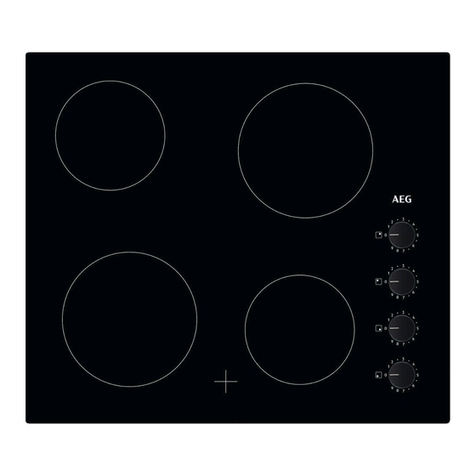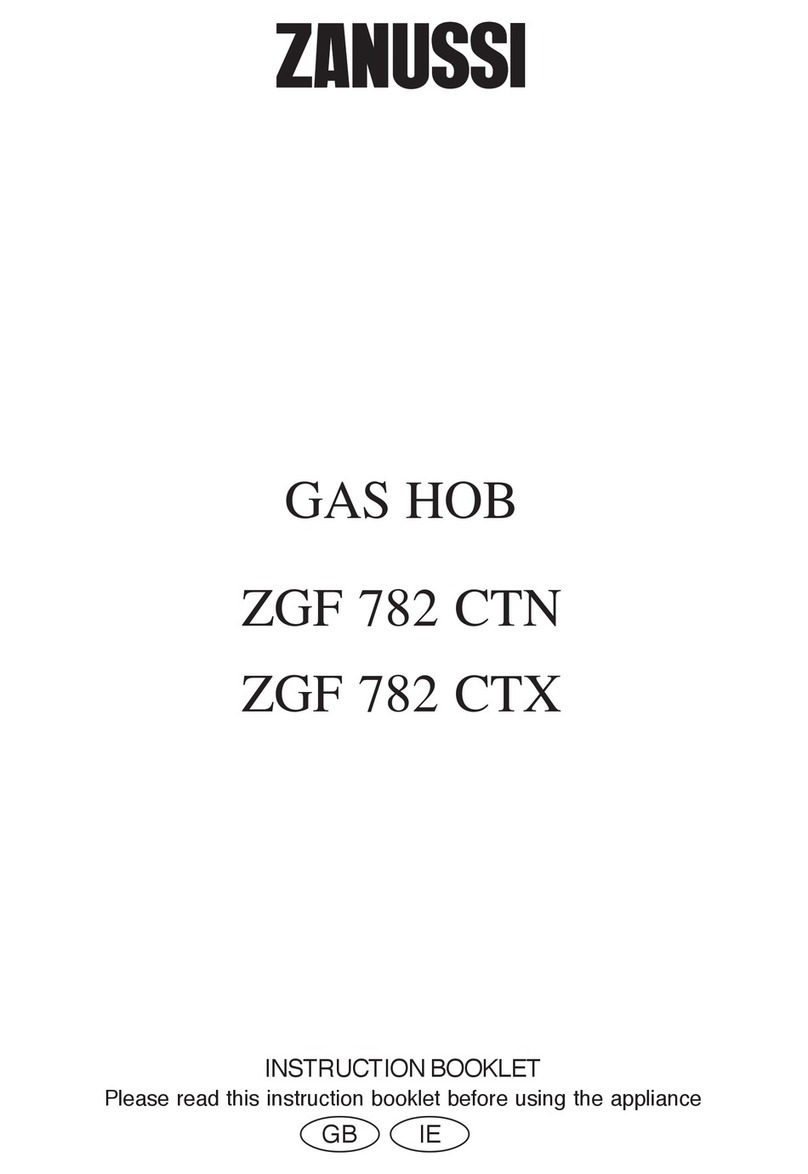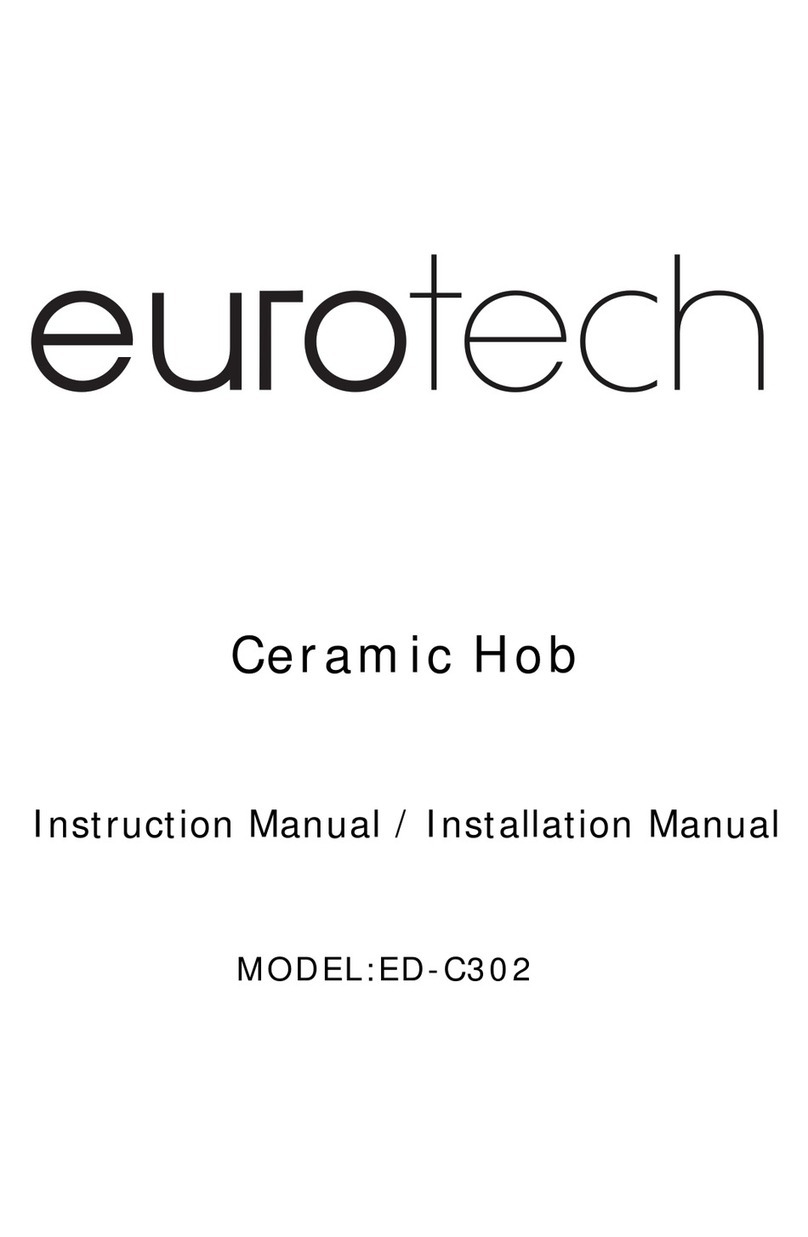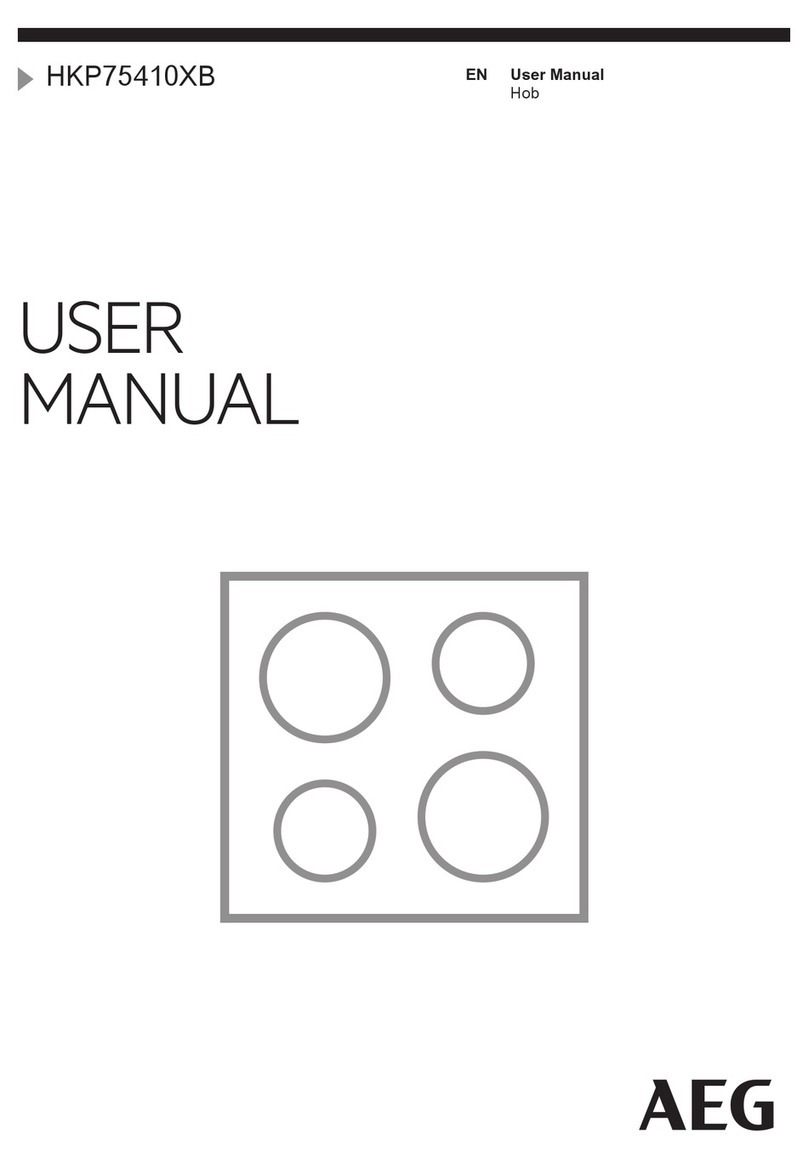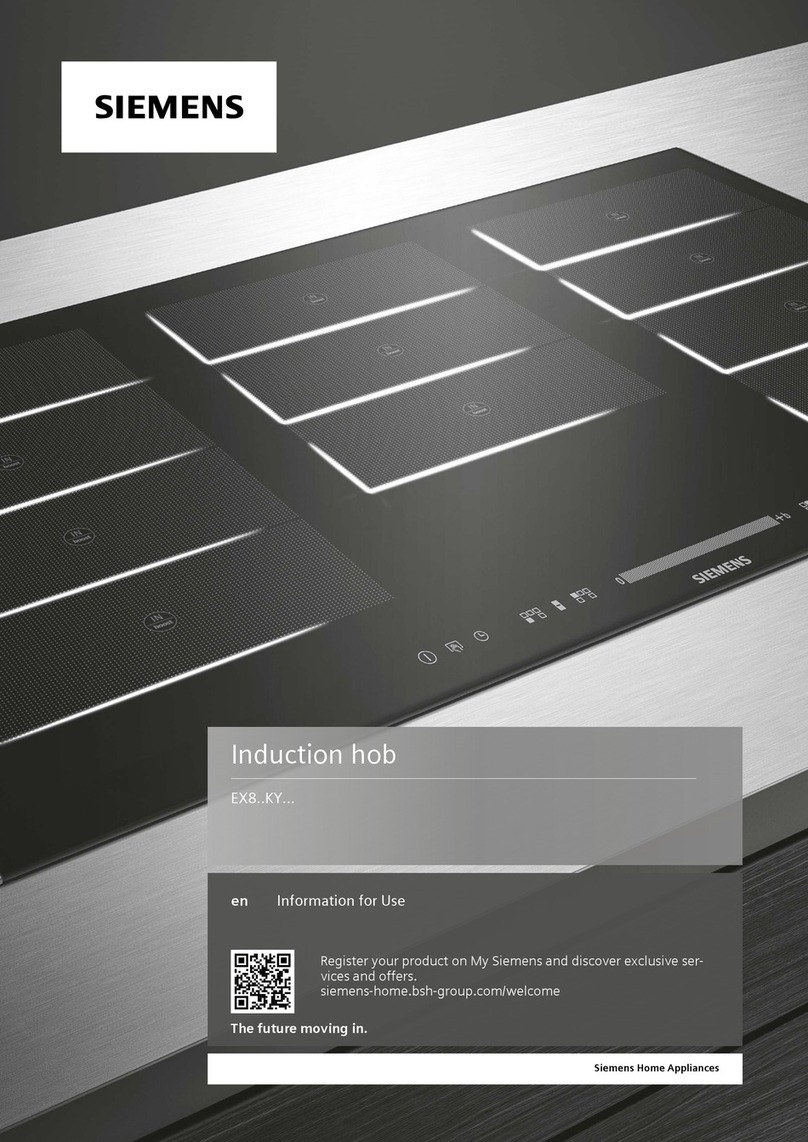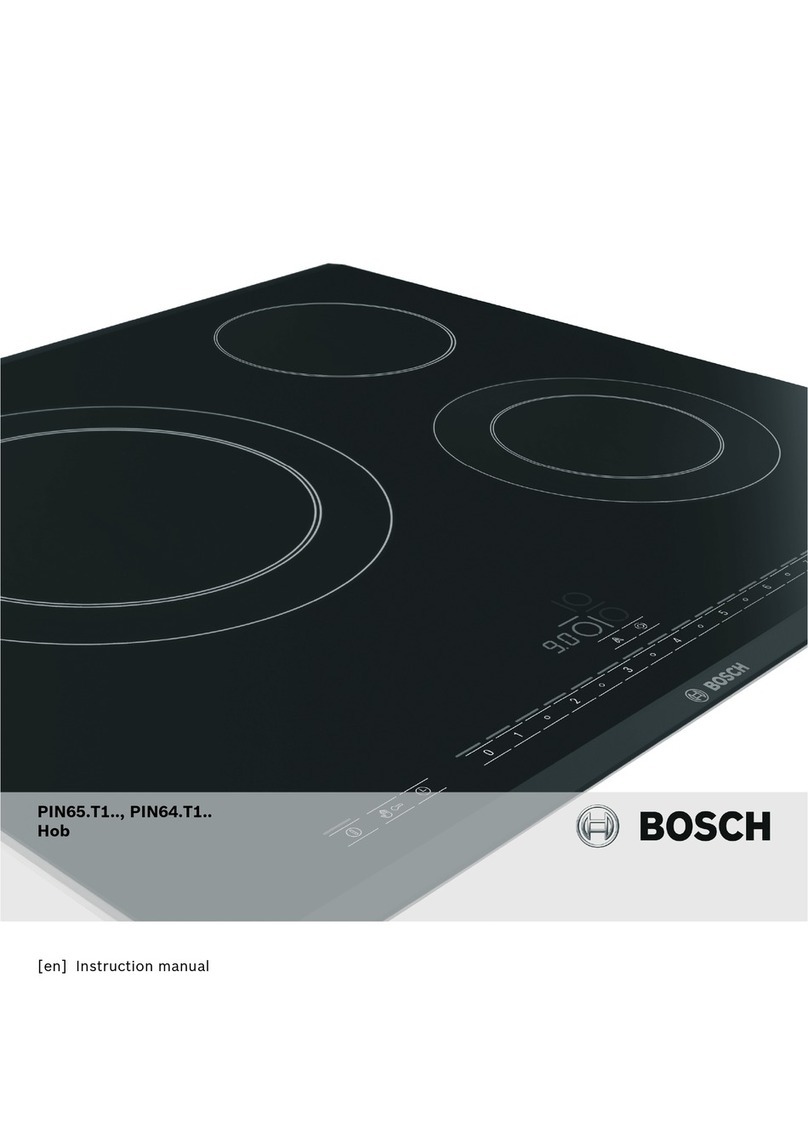99
Contents
Operating Instructions . . . . . . . . . . . . . . . . . . . . . . . . . . . . . . 100
Safety . . . . . . . . . . . . . . . . . . . . . . . . . . . . . . . . . . . . . . . . . . . . . . . . . . . 100
Disposal . . . . . . . . . . . . . . . . . . . . . . . . . . . . . . . . . . . . . . . . . . . . . . . . . 103
The Key Features of Your Appliance . . . . . . . . . . . . . . . . . . . . . . . . . . 104
Discription of the hob . . . . . . . . . . . . . . . . . . . . . . . . . . . . . . . . . . . . . . 105
Cooking zones and control panel . . . . . . . . . . . . . . . . . . . . . . . . . . . . . . 105
Digital Displays . . . . . . . . . . . . . . . . . . . . . . . . . . . . . . . . . . . . . . . . . . . . 106
Cooking Zone Safety Cut-out . . . . . . . . . . . . . . . . . . . . . . . . . . . . . . . . . 106
Before Using for the First Time . . . . . . . . . . . . . . . . . . . . . . . . . . . . . . 107
Initial Cleaning . . . . . . . . . . . . . . . . . . . . . . . . . . . . . . . . . . . . . . . . . . . . . 107
Operating the Hob . . . . . . . . . . . . . . . . . . . . . . . . . . . . . . . . . . . . . . . . . 107
TOUCH CONTROL Sensor Field . . . . . . . . . . . . . . . . . . . . . . . . . . . . 107
Switching On the Appliance . . . . . . . . . . . . . . . . . . . . . . . . . . . . . . . . 108
Switching Off the Appliance . . . . . . . . . . . . . . . . . . . . . . . . . . . . . . . 108
Cooking Zone Selection . . . . . . . . . . . . . . . . . . . . . . . . . . . . . . . . . . . 109
Heat Setting Selection + and - . . . . . . . . . . . . . . . . . . . . . . . . . . . . . . 110
Switching off a Cooking Zone . . . . . . . . . . . . . . . . . . . . . . . . . . . . . . 111
Residual Heat Indicator . . . . . . . . . . . . . . . . . . . . . . . . . . . . . . . . . . . 111
Child-Safety Device . . . . . . . . . . . . . . . . . . . . . . . . . . . . . . . . . . . . . . 113
Uses, Tables and Tips . . . . . . . . . . . . . . . . . . . . . . . . . . . . . . . . . . . . . . 116
Pans . . . . . . . . . . . . . . . . . . . . . . . . . . . . . . . . . . . . . . . . . . . . . . . . . . . . 116
Charts . . . . . . . . . . . . . . . . . . . . . . . . . . . . . . . . . . . . . . . . . . . . . . . . . . . 117
Cleaning and Care . . . . . . . . . . . . . . . . . . . . . . . . . . . . . . . . . . . . . . . . . 118
Hob . . . . . . . . . . . . . . . . . . . . . . . . . . . . . . . . . . . . . . . . . . . . . . . . . . . . . 118
Hob Frame . . . . . . . . . . . . . . . . . . . . . . . . . . . . . . . . . . . . . . . . . . . . . . . 119
What do I do if ... . . . . . . . . . . . . . . . . . . . . . . . . . . . . . . . . . . . . . . . . . . 120
Rectifying faults . . . . . . . . . . . . . . . . . . . . . . . . . . . . . . . . . . . . . . . . . 120
Installation Instructions . . . . . . . . . . . . . . . . . . . . . . . . . . . . . 123
Technical Data . . . . . . . . . . . . . . . . . . . . . . . . . . . . . . . . . . . . . . . . . . . . . 123
Regulations, Standards, Directives . . . . . . . . . . . . . . . . . . . . . . . . . . . . . 124
Safety Instructions for the Installer . . . . . . . . . . . . . . . . . . . . . . . . . . . . . 125
Electrical Connection . . . . . . . . . . . . . . . . . . . . . . . . . . . . . . . . . . . . . . . 126
Rating Plate . . . . . . . . . . . . . . . . . . . . . . . . . . . . . . . . . . . . . . . . . . . . . . . 128
Assembly . . . . . . . . . . . . . . . . . . . . . . . . . . . . . . . . . . . . . . . . . . . . . 130

